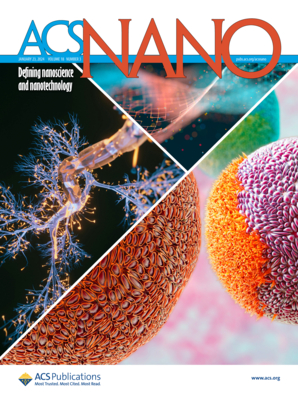Chemical Affinity Capture of Plasma Extracellular Vesicles Enables Efficient and Large-Scale Proteomic Identification of Prostate Cancer Biomarkers
IF 15.8
1区 材料科学
Q1 CHEMISTRY, MULTIDISCIPLINARY
引用次数: 0
Abstract
The serum prostate-specific antigen (PSA) testing is widely used for prostate cancer (PCa) screening but suffers from poor specificity, leading to unnecessary biopsies and overtreatment. The significant potential of extracellular vesicles (EVs) in cancer diagnosis has driven the development of efficient methods to isolate and identify EV biomarkers from large-scale clinical samples. Here, we systematically evaluate five commonly used EV isolation techniques through proteomic profiling of plasma-derived EVs, endorsing TiO2-based chemical affinity capture as a superior approach for analyzing EVs from complex clinical samples. This method demonstrates exceptional advantages in speed, throughput, reproducibility, and protein coverage. Using this optimized workflow, we analyzed plasma EVs from 80 patients with PCa and benign prostatic hyperplasia (BPH), identifying growth differentiation factor 15 (GDF15) as a compelling biomarker with a predictive power (AUC) of 0.908 for PCa. Extensive validation across independent cohorts comprising 457 samples, including plasma EVs and prostate tissues, confirmed GDF15’s ability to distinguish PCa from BPH and stratify PCa stages. Notably, the combination of GDF15 with PSA further enhanced diagnostic efficiency, particularly for patients in the PSA diagnostic gray zone. This study establishes a robust workflow for EV protein analysis in large clinical cohorts and highlights EV-GDF15 as a promising biomarker for noninvasive PCa diagnosis.

求助全文
约1分钟内获得全文
求助全文
来源期刊

ACS Nano
工程技术-材料科学:综合
CiteScore
26.00
自引率
4.10%
发文量
1627
审稿时长
1.7 months
期刊介绍:
ACS Nano, published monthly, serves as an international forum for comprehensive articles on nanoscience and nanotechnology research at the intersections of chemistry, biology, materials science, physics, and engineering. The journal fosters communication among scientists in these communities, facilitating collaboration, new research opportunities, and advancements through discoveries. ACS Nano covers synthesis, assembly, characterization, theory, and simulation of nanostructures, nanobiotechnology, nanofabrication, methods and tools for nanoscience and nanotechnology, and self- and directed-assembly. Alongside original research articles, it offers thorough reviews, perspectives on cutting-edge research, and discussions envisioning the future of nanoscience and nanotechnology.
 求助内容:
求助内容: 应助结果提醒方式:
应助结果提醒方式:


